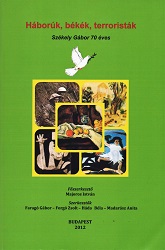
We kindly inform you that, as long as the subject affiliation of our 300.000+ articles is in progress, you might get unsufficient or no results on your third level or second level search. In this case, please broaden your search criteria.

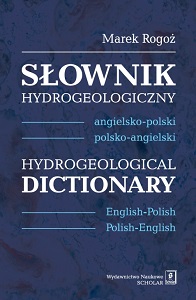
Idea opracowania słownika powstała w wyniku doświadczeń autora, który przez ponad 40 lat, jako pracownik naukowy, zajmował się problematyką hydrogeologiczną, często korzystał z bardzo bogatej anglojęzycznej literatury naukowej i technicznej oraz współpracował z licznymi zagranicznymi placówkami badawczymi. W pracach tych poważnym utrudnieniem był brak dobrego, współczesnego słownika angielsko-polskiego i polsko-angielskiego terminologii hydrogeologicznej. Niniejszy słownik stanowi próbę uzupełnienia tego braku. Powinien on ułatwić polskim pracownikom naukowym oraz licznej rzeszy studentów hydrogeologii, górnictwa, ochrony środowiska i nauk pokrewnych korzystanie z anglojęzycznej literatury technicznej i naukowej, bez której ani poważnie traktowane studia, ani postęp naukowy nie wydają się możliwe.W słowniku uwzględniono nie tylko terminologię czysto hydrogeologiczną, ale również wykorzystywane w hydrogeologii terminy z nauk i dziedzin pokrewnych, jak matematyka, fizyka, geologia, ochrona środowiska itp. Ze zrozumiałych względów lista terminów z poszczególnych dziedzin nie jest pełna: przy ich doborze kierowano się doświadczeniem i intuicją autora. Słownik, zarówno w wersji angielsko-polskiej, jak i polsko-angielskiej, ma budowę gniazdową – do każdego hasła głównego włączono najczęściej występujące terminy złożone, zawierające to hasło. W obrębie danego gniazda wyraz hasłowy skracany jest do pierwszej litery. W celu zwiększenia funkcjonalności słownika zamieszczono w nim osobne zestawienia: ważniejszych skrótów i skrótowców stosowanych w pracach angielskich i polskich oraz jednostek miar stosowanych w krajach anglojęzycznych z przeliczeniem na jednostki Międzynarodowego Układu SI. W słowniku zastosowano ortografię brytyjską.
More...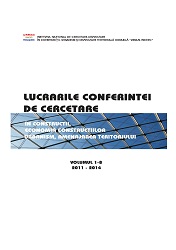
Includes full papers presented in the esearch conference on constructions, economy of constructions, architecture, urbanism and territorial development, editions 1-8. Individual abstracts available for each article.
More...
Lucrarea de faţă îşi propune să prezinte structura sistemului ierarhic de planificare spaţială în Germania, dezvoltând fiecare nivel de planificare şi anume planificarea la nivel federal, la nivel de Land, la nivel de regiune şi la nivel de comună, prezentând mai apoi şi Legislaţia specială a planificării urbane, capitol care include următoarele subteme: Măsuri de reabilitare urbană, Măsuri de dezvoltare urbană, Restructurare urbană, Oraşul social şi Ordonanţa de conservare. Următorul capitol îşi propune să încerce să răspundă la întrebarea dacă actualmente planificarea spaţială în Germania trece printr-o perioadă de criză, aducând o serie de argumente în acest sens. Astfel că acest capitol se împarte în mai multe subteme printre care se numără şi instrumente de planificare pe timp de criză şi sarcinile de viitor ale planificării spaţiale. Mai apoi lucrarea dezvoltă teoria formulată de Christensen în anul 1985 privind comportamentul în faţa nesiguranţei în procesul de planificare. Christensen, tematizează necesitatea ca planificatorul (urbanistul) să joace rolul de comunicator, mediator. El trebuie să se lupte nu numai cu o nesiguranţă analitică în procesul de planificare, dar şi cu o nesiguranţă sistematică. Planificatorii înţeleg nesiguranţa ca fiind principalul obstacol în procesul de planificare, încercând să o reducă, iar Christensen propune în primul rând o înţelegere mai bună a calcului nesiguranţei la nivel de planificare spaţială. Ultimul capitol abordează planificarea participativă, acest subiect fiind pus în discuţie pentru prima oară în Germania în anii 60, în ziua de azi discuţia participării cetăţenilor la marile decizii în ceea ce priveşte planificarea fiind un nou indicator democratic, formulând centrul noilor metode de planificare în Germania. Din păcate însă participarea este actualmente înţeleasă ca un elemnt ce deranjează, constrânge aşa zisa bună desfăşurare a proceselor de planificare, procesul de paticipare presupunând şi mai mult timp, personal şi bani.
More...
Le projet d’article, que je propose ici, est une étude sur les dynamiques socio-territoriales à l’oeuvre dans le village de pêcheurs du littoral Sud-Ouest de Madagascar, Andavadoake. Les critères d’identification de cette zone sont basés : d’une part sur les règles de résidence traditionnelles c’est-à-dire la présence de cimetière(s) et de hazomanga (poteau rituel) rendant palpable l’identité des groupes, et d’autre part, sur l’émergence des migrants venant de l’intérieur de terre, et la « pullulation » de projet de développement/ conservation dans la région. Si depuis des années la côte sud-ouest malgache a été occupée majoritairement par les pêcheurs Vezo, elle accueille désormais des différents types migrants que certains se convertissent en pêcheurs et d’autres introduisent des nouvelles activités et nouvelles pratiques en adoptant du nouveau mode de vie. Cette situation provoque des désordres sociétaux : conflit entre les usagers des ressources, vente de terre, non respect des anciens…Mon propos consiste donc à réfléchir sur l’avenir de cette zone littorale face à son « statut multiple » : à la fois une « terre d’accueil » pour les étrangers et une « terre de départ » pour les « autochtones » Vezo. De ce fait, la question à laquelle nous cherchons à répondre est: pourquoi les tompontanà, (propriétaire du village) préfèrent migrer, et laisser leur territoire à ces nouveaux venus ? Le déplacement saisonnier était une stratégie utilisé par les pêcheurs vezo pour échapper aux dangers (traite d’esclaves, colonisation, insécurité,…). Avec le temps, cette pratique est devenue une tradition et ils la pratiquent d’une manière systématique pour trouver des endroits plus productifs.
More...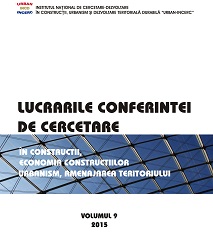
During the economic crisis, the difficulty to access housing has increased due to the shrinking of purchasing power, which accentuated the preference for rented social housing. Persistent jobs crisis, accentuated during of economic recession periods, makes housing to become a central issue of public policies against poverty and exclusion. By mobilizing all social actors involved in housing policy, France may be one of the best examples in Europe on addressing social housing sector. In this context, in 2014, HLM organizations were involved in increasing the supply of rented housing, thereby supporting the needs of French population. They were able to form a partnership with the State in order to implement a plan for investment in housing, which resulted in the HLM Agenda for 2015 – 2018, including a number of specific objectives and concrete measures designed to achieve each objective established.
More...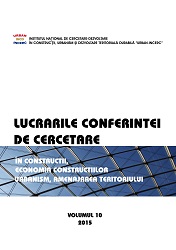
Includes full papers presented in the esearch conference on constructions, economy of constructions, architecture, urbanism and territorial development, 10th edition. Individual abstracts available for each article.
More...
Providing of social housing is a real problem for millions of families in the European Union and in the world, most intense being felt in the states most affected by the current economic crisis. Providing social housing in Austria had substantial reforms in 2009, when the state has withdrawn the financing and the formerly budget dedicated to promoting housing has been integrated into the general budget of the federal provinces. The social housing stock represents around 24% of the housing stock of the country, of which 60% is owned by municipalities and public companies. Despite the economic crisis Austria has maintained extensive subsidies and it has granted allowances for housing, mainly for rent regulated and non-market housing.
More...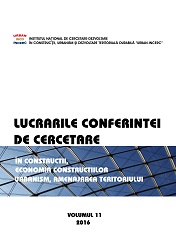
Includes full papers presented in the esearch conference on constructions, economy of constructions, architecture, urbanism and territorial development, 11th edition. Individual abstracts available for each article.
More...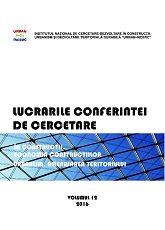
Includes full papers presented in the esearch conference on constructions, economy of constructions, architecture, urbanism and territorial development, 12th edition. Individual abstracts available for each article.
More...
Bucharest, as the majority of big cities, but more than many of them, bears the negative consequences of a very high motorization rate and of an irrepressible traffic, generated on and by its territory of influence. The city’s polarizing force express itself through commuting pendulum flows from and towards its periurban settlements, who are spatially and functionally related to it. In a major share, the commuting trips are made by cars that enter, travel and park within Bucharest, widening the negative impacts of its internal traffic and fleet of cars. The best solution to mitigate traffic congestions, reduce pollution, enhance road safety, release and rehabilitate public space is to provide an efficient regional transportation system at the scale of the quotidian mobility territory (working catchment area delimitating the functional urban area) and the implementation of a coherent mobility policy through consensual packages of measures. This type of complex and expensive transportation supply can be achievable only at a long term horizon, whilst solutions adequate to the current context must be implemented as soon as possible. The paper addresses the solution of organizing "intermodal gates” for the city, as effective equipements for modal report, providing good conditions for fast, convenient and comfortable transfer from car to public transportation, in particular to the subway. Priority locations for such intermodal hubs are those at the entries within Bucharest of A1, A2, A3 motorways, from which large motorized flows are discharging on the internal road framework of the city, already overcharged. The majority of those flows is of commuting trips, which have high potential for modal report towards public, collective transportation. The "Intermodal Gates" are a transfer hubs system with high potential for leading, within Bucharest city, to the mitigation of the traffic originating from its territory of influence. For this “carrot” potential to be efficiently harnessed, “stick” measures also must be taken to limit, condition and make expensive the access and parking in the city, mainly in its center. The work is based on the author’s research undertaken within the project SAFENET - Research on estimation and enhancement of intrinsic safety performances for urban traffic networks, PN-II-PT-PCC A-2011-3.2-1439 conducted through the “Partnership in priority areas” program - PNII, PCCA Tip 2, conducted between 2012-2016 with the support of ANCSI CNDI – UEFISCDI, and addresses proposals of the author during the preparation of the Sustainable Urban Mobility Plan for Bucharest-Ilfov region, 2014-2015.
More...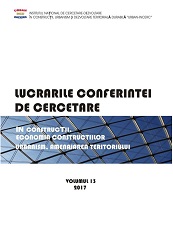
Includes full papers presented in the esearch conference on constructions, economy of constructions, architecture, urbanism and territorial development, 13th edition. Individual abstracts available for each article.
More...
Accessibility is a key concept in regional development, with numerous ties to territorial cohesion and polycentricity. Moreover, it also exhibits a geo-strategic function, anchored in the international relationships between countries and continents. The article reviews several case studies, placing analyses of the Romanian accessibility in a broader context. The results show that regional development, overall EU connectivity and possible transit fluxes are prevented by the configuration or lack of communication routes. Increasing the accessibility of regions must be a priority of governments, regardless of political opinions. It is expected that the transition of economy to post-carbon era or other models – green economy, knowledge-based economy etc.) – to result into the emergence of new poles and axes of development, and ensure transport sustainability.
More...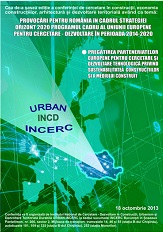
Sixth international edition of the research conference on civil engineering, economy of constructions, architecture, urban planning and territorial development. Abstract Proceedings Includes abstracts of the papers presented in the research conference on constructions, economy of constructions, architecture, urbanism and territorial development, 6th edition.
More...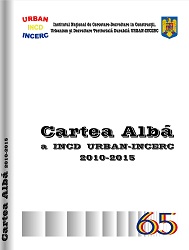
White Charter of NIRD URBAN-INCERC in 2010-2015: research in civil engineering, architecture and spatial planning.
More...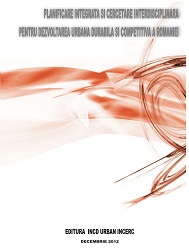
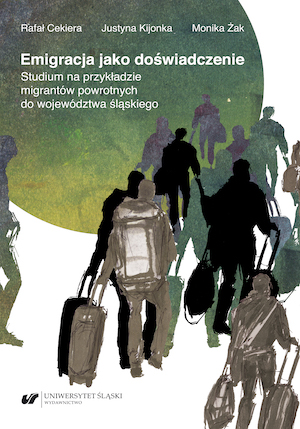
The post-accession migration amongst the Poles has constituted one of the most significant demographic processes in the country. Unfortunately, there are still too few works in the Polish Social Sciences on post-accession re-emigrants. The study considers the problem of return migration from the European Union countries to Poland and its socio-economic determinants, in the context of sociology of migration, sociology of work, demography and ethnicity, as well as the life-course perspective. The aim of the book is also to present a new typology of return migration.
More...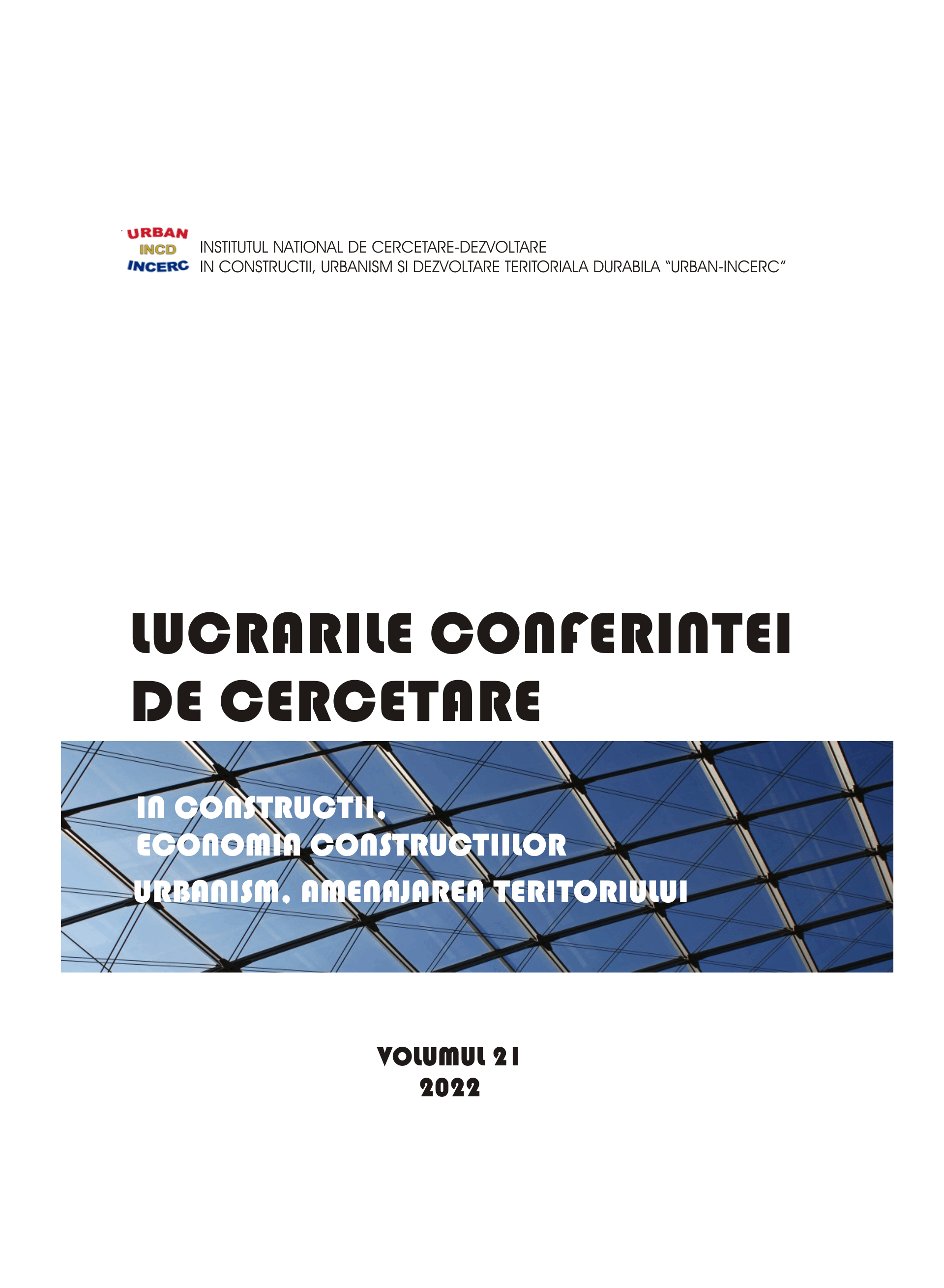
This volume represents the Paper Proceedings of theresearch conference on constructions, economy of buildings, architecture, urban and territorial development.
More...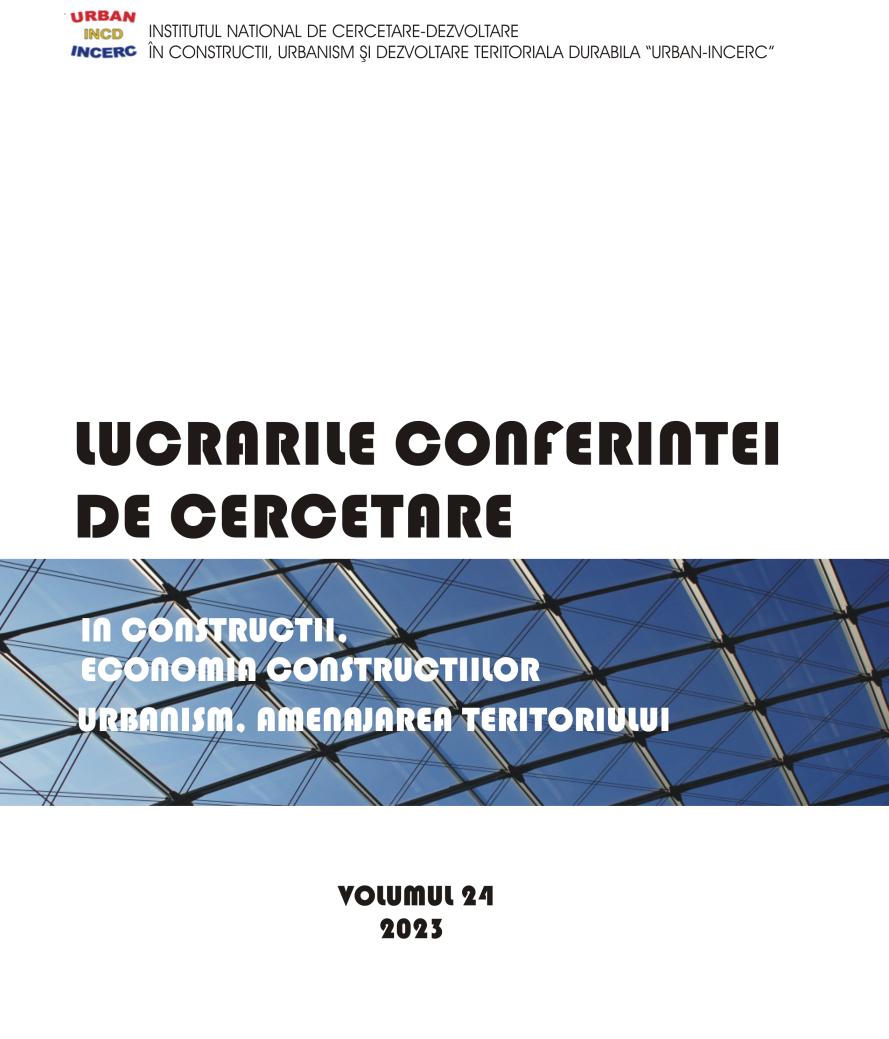
Includes full papers presented in the research conference on constructions, economy of constructions, architecture, urbanism and territorial development.
More...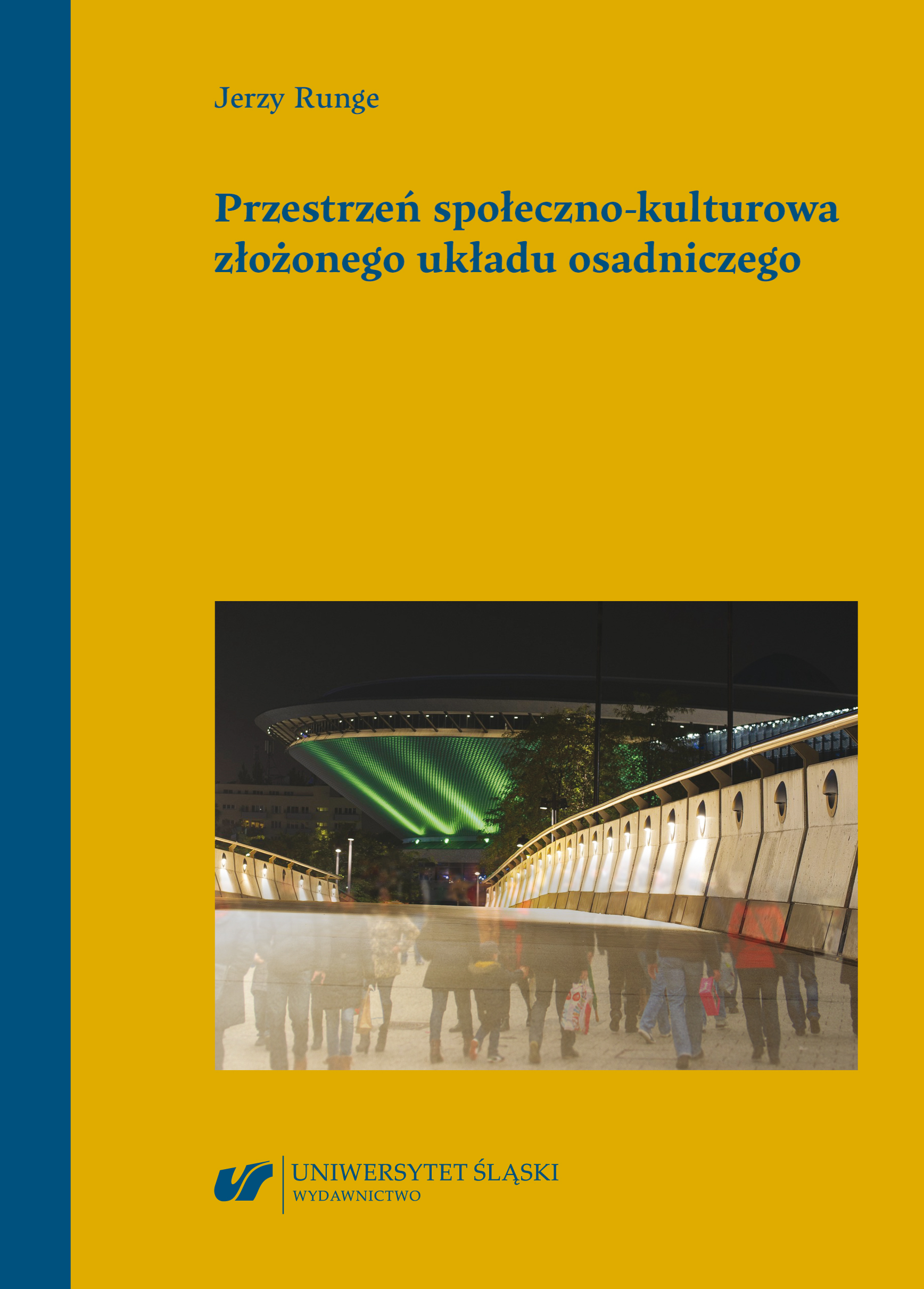
The Katowice conurbation had taken shape beginning with the end of the 18th century in the borderlands of two states, Poland and Germany. In this sense, it was an area situated on the peripheries of both countries. Permanent and dynamic interactions between different national-ethnic groups resulted in cultural intermingling. Beginning with the middle of the 20th century, this complex settlement system was already at the centre of socio-economic development on a supra-regional scale. As a result of multidirectional migration, influenced by intensive industrialisation, social relations evolved between the migrants and the local (indigenous) population, as well as between the migrants themselves. The aim of this study is to analyse the early multicultural nature of selected cities in the Katowice conurbation against a methodological and terminological background and to indicate the extent to which this feature might be an asset in present-day socio-economic transformations in this area. The temporal and spatial overlapping of various origins of socio-cultural links and relations leads the author to formulate the concepts of cultural genotype and primary and secondary cultural genotype, and to exemplify the formation of cultural genotypes in the Katowice conurbation.
More...